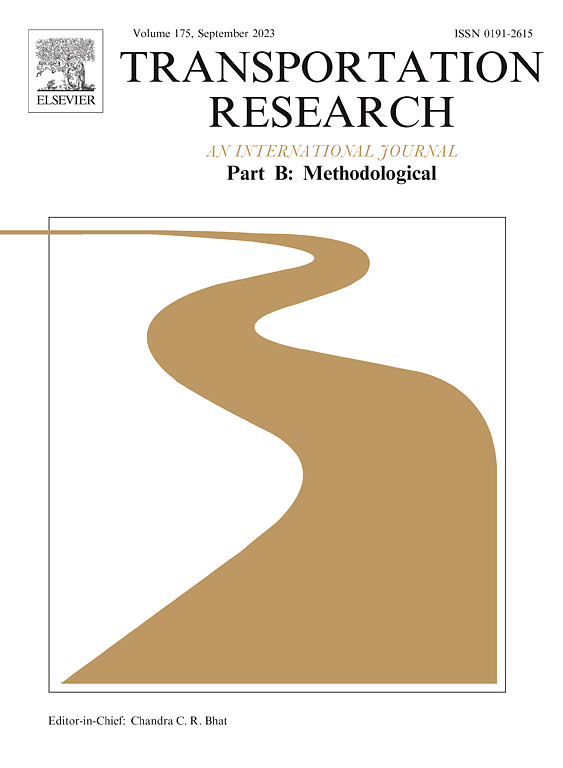Locational rent vs. monopoly rent on the side-businesses of transport infrastructure
IF 6.3
1区 工程技术
Q1 ECONOMICS
引用次数: 0
Abstract
This paper analyzes the relationship between locational and monopoly rents, developing a model consisting of an airport, shops at the airport, and shops at another (non-airport) location. When the unweighted sum of the utility of the representative consumer and the airport profit is maximized, no monopoly rent exists and thus, monopoly rent is independent of locational rent, but a higher locational rent results in a lower social welfare in equilibrium. On the other hand, when the airport profit is maximized, monopoly rent is an increasing function of locational rent. An increase in locational rent reduces welfare in equilibrium if the effect of the locational rent on the demand of the good sold at the airport is small. As a special case, we demonstrate that the monopoly rent can be separated from locational rent if the demand function of the good sold at an airport is multiplicatively separable regarding locational rent. Another extreme result occurs when the airport and non-airport goods are perfect substitutes: we derive one-to-one relationship between monopoly and locational rents, i.e., an increase in locational rent by one unit immediately implies an increase in monopoly rent by the same amount. Imperfect competition for shops at an airport and another location partly modifies the results, which suggests that market structure in the goods market affects the relationship between monopoly and locational rents. Our analysis demonstrates that in general, locational rent affects monopoly rent and social welfare and the dichotomy between locational and monopoly rents does not hold.
交通基础设施副业的区位租金与垄断租金
本文分析了区位和垄断租金之间的关系,建立了一个由机场、机场商店和另一个(非机场)地点的商店组成的模型。当代表消费者的效用与机场利润的未加权总和达到最大时,不存在垄断租金,因此垄断租金与区位租金无关,但在均衡状态下,较高的区位租金导致较低的社会福利。另一方面,当机场利润最大化时,垄断租金是位置租金的递增函数。如果区位租金对机场所售商品需求的影响很小,那么区位租金的增加会降低均衡福利。作为一个特例,我们证明了如果在机场销售的商品的需求函数对于位置租金是乘可分离的,那么垄断租金可以与位置租金分离。当机场商品和非机场商品完全替代时,另一个极端结果出现:我们推导出垄断与区位租金之间的一对一关系,即区位租金每增加一个单位,垄断租金就会立即增加相同数量。机场和其他地点商店的不完全竞争在一定程度上修正了结果,这表明商品市场的市场结构影响了垄断与地点租金之间的关系。我们的分析表明,总体而言,区位租金影响垄断租金和社会福利,区位租金和垄断租金的二分法不成立。
本文章由计算机程序翻译,如有差异,请以英文原文为准。
求助全文
约1分钟内获得全文
求助全文
来源期刊
CiteScore
12.40
自引率
8.80%
发文量
143
审稿时长
14.1 weeks
期刊介绍:
Transportation Research: Part B publishes papers on all methodological aspects of the subject, particularly those that require mathematical analysis. The general theme of the journal is the development and solution of problems that are adequately motivated to deal with important aspects of the design and/or analysis of transportation systems. Areas covered include: traffic flow; design and analysis of transportation networks; control and scheduling; optimization; queuing theory; logistics; supply chains; development and application of statistical, econometric and mathematical models to address transportation problems; cost models; pricing and/or investment; traveler or shipper behavior; cost-benefit methodologies.

 求助内容:
求助内容: 应助结果提醒方式:
应助结果提醒方式:


